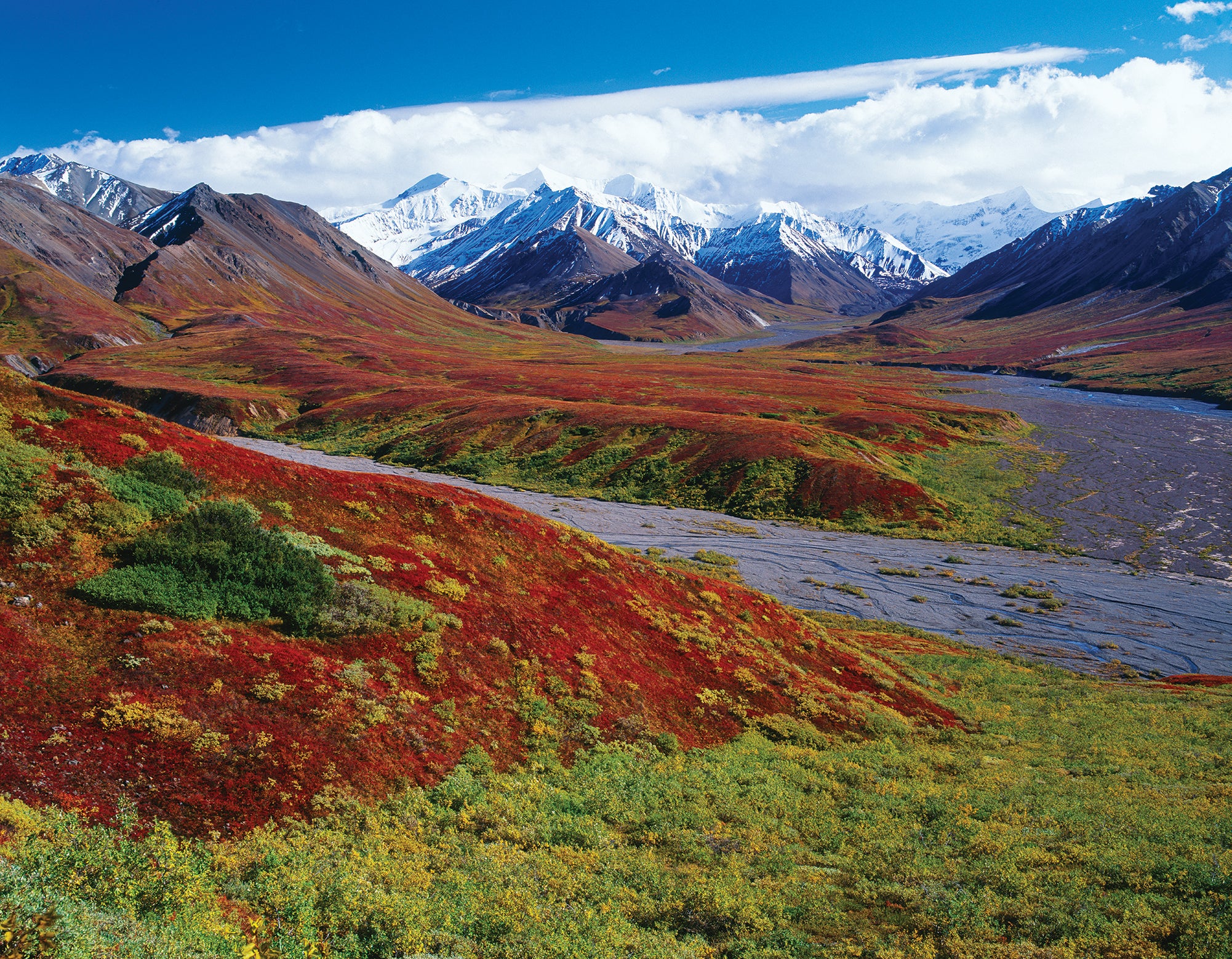The Best Fall Leaves Are Beneath Your Feet

'Stephen Materra'
There’s something to be said for looking at your feet when you’re hiking. As I walk, I watch explosions of fall hues seep out from beneath my mud-splotched boots. Red. Yellow. Green. White. Purple. They carry my gaze all the way to the horizon, where the tundra meets the sky in a blur of color.
In these valleys and alpine areas of Alaska’s Talkeetna Mountains, the ecosystem exists almost entirely on the ground. Instead of trees, vibrant brushes, riverside lichens, and berry patches dot the place. They each burst into life come fall: The blueberries ripen, moss glows vivid green, and the thick brush flashes its autumn personality.
Each step feels like another stroke of the paintbrush. My left foot lands
under the crimson leaves of the bearberry bush; my right next to white, sponge-like Caribou moss. Off the side of the trail, I can see the burnt-yellow leaves of the Arctic willow shrub. I pause regularly to take photos of the plants beside my boots, fascinated by the constantly changing terrain.
I’m not here to argue against the traditional fall excursion. Seeing the treetops turn crimson in the Northeast, orange in the Southeast, yellow in the Rockies—or even chasing the golden larches in the Pacific Northwest—is an annual objective for hikers, and should be. But when it comes to exploring wilderness, the thing that binds us throughout the year, fall to fall, is a sense of adventure and a desire to discover new terrain and new spots. So why do we revert to the “same old” each and every autumn? Why do lists of the “best fall hikes” and “best fall colors” always spew the same trips for tree leaf-peeping, when color-changing ground cover is no less spectacular?
Consider this: A forest full of the same tree species displays contrast within itself, the individual trees changing at different rates, allowing the forest as a whole to exhibit the various phases of seasonality—green to yellow to brown, say. Landscapes dominated by ground cover, however, offer us not only the contrast of colors, but the direct comparison of dozens of plant species, side by side, all changing at the same time in different ways and at different rates.
The obvious reason for the tree bias is that forests are more accessible than, say, tundras. (Not everyone can make it up to Alaska on the heels of summer.) But that’s no excuse. America is full of national grasslands, with 20 protected prairies across the West and Middle America. Highlighted by ground flowers like fall-blooming asters and goldenrods, they, too, go through color transitions. The Northeast? Well, it has its own pockets of tundra. That means there’s a ground-level color show just around the corner, no matter where you live—an easy add-on to your regularly scheduled leaf-peeping plans.
Halfway up the hillside, I pause to look out over the valley below. With no trees to block the view, the colors outrun my vision in every direction, the patches sitting adjacent to one another like a well-stocked palette. It’s a view I won’t forget. All my life, I have looked up to fall; today, I get to look down upon it.